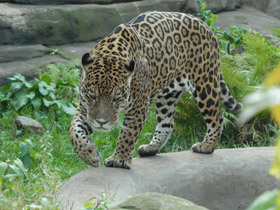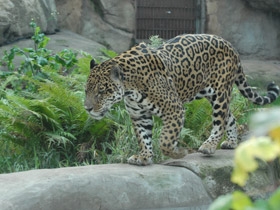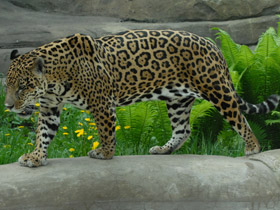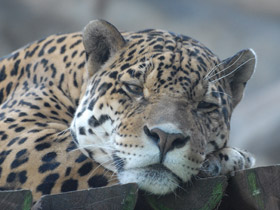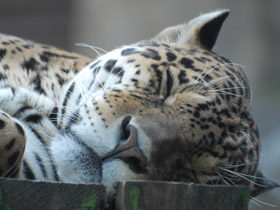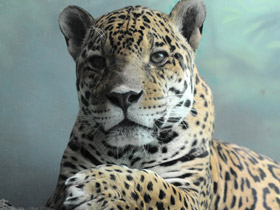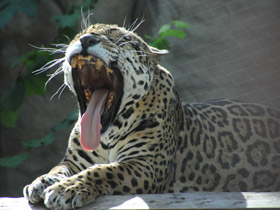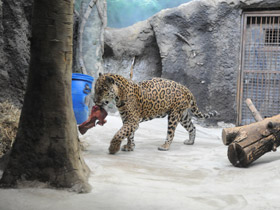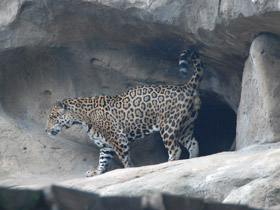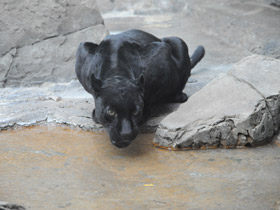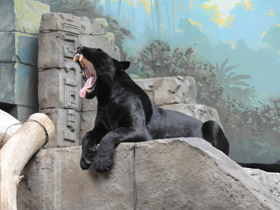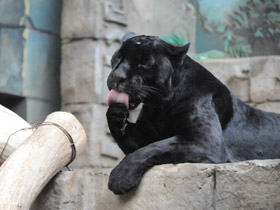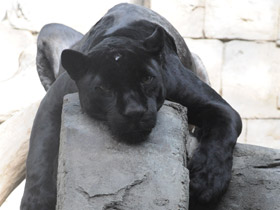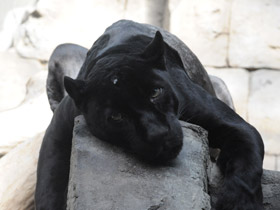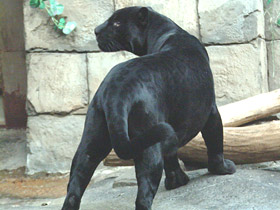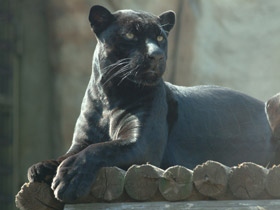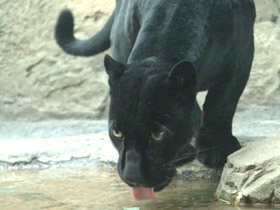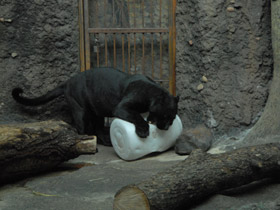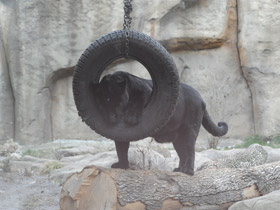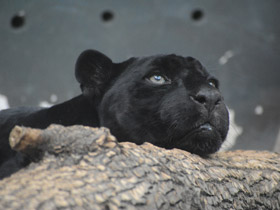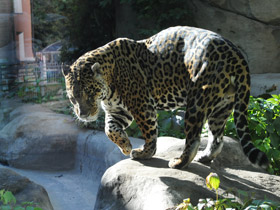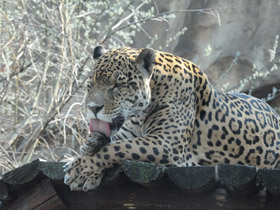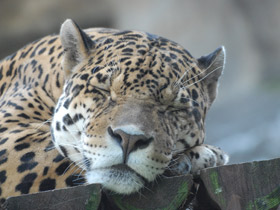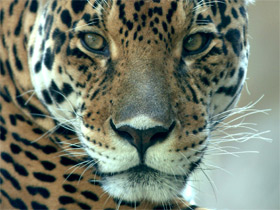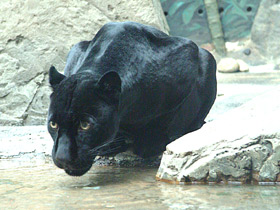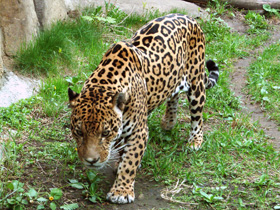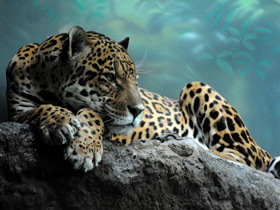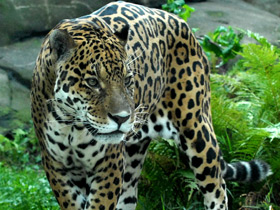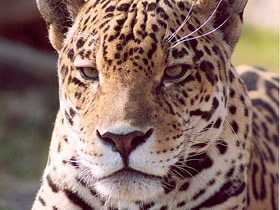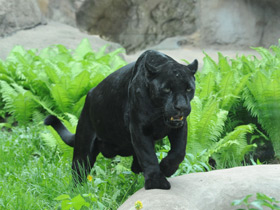Jaguar Panthera onca
Jaguar видео
The Jaguar is the third in size in the world and the largest in the New World representative of the Felidae family. The body length of the male jaguar is 120 to 185 cm, the tail length is 45-75 cm, and the weight, 90 to 110 kg. (Females are smaller and weigh 60 to 80 kg.) The jaguar's body is stocky and strong, and the limbs are short and powerful, which is why it looks low and even clumsy (Photos 1, 2). Outstanding is the disproportionally massive head of this carnivore. Its size relates to the exceptional power of its jaws, which enable this big cat to easily break even the strong carapaces of the turtles (Photos 4, 5, 6). Even though the jaguar's pelage is spotted as in many other cats, it is still unique, as the spots form so-called rosettes (Photo 3).
Jaguars prefer living in places located close to the water. They are accomplished swimmers and love the water. Just like other felids, they mark their territories with urine (Photo 9). As opposed to the other representatives of the Felidae family, jaguars are real generalist carnivores (Photo 8). Their prey may consist of highly varied animals, like capybaras, deer, tapirs, fish, turtles and their eggs. The jaguar also takes birds, monkeys, foxes, snakes, rodents and even alligators. This most dangerous carnivore of South America is able to kill prey weighing up to 300 kg. The jaguar's main hunting method is hiding in the tall grass on the bank of a water reservoir, in a tree or in a path leading to a watering place. When attacking the victim, it usually jumps onto its back or from the side, grabbing it by the neck and trying to get it down. The jaguar's bite is so strong that its teeth can penetrate through the skull of a large ungulate. It hunts fish by throwing it out of the water, and hitting it with its powerful paws. There is no cure to help against the jaguar even for monkeys, because this cat is an agile tree climber.
The female chooses a place for a den among the rocks, in the bushes or in tree hollows. After a 90 to 110 day gestation she gives birth to two to four cubs. There is more black colour in their patterns than in the patterns of their parents, and the black patches consist of solid spots rather than of rosettes. The jaguar cubs spend six weeks in the den, and in three months after birth they already accompany their mother when she hunts. However, they separate from her only at the age of 2 years.
Occasionally there are melanistic animals among jaguars that appear entirely black. Their dark colouration is the result of an excess of the dark pigment, melanin. The frequency of occurrence of such specimens is not connected to ecological or geographic conditions: one litter of offspring may have kittens of different colours. Dark specimens are more likely to have dark brown than black fur, which may show the typical jaguar spotted pattern in bright sunlight and certain angles of vision (Photo 15). A melanistic female and a normally coloured male have been housed at the Moscow Zoo for many years (Photo 10-20).

















